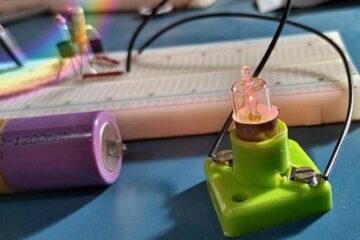When designing a security system, often we need to add a siren circuitry with it. Fortunately, there are many analog and digital electronics ways to accomplish that chore. However, these days, we can also use pre-made electronic sirens, which are mostly coming from Chinese markets, to save some time and money.
So, this post is about a compact police siren that I recently got through an online discount sale. Is it an acoustic warning device worth using, let us see.
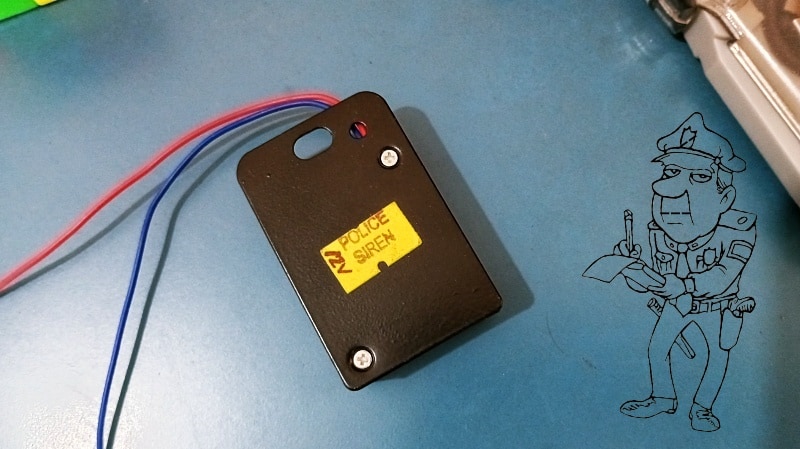
According to the seller’s description, this is a small police siren for do it yourself projects, and it is especially useful if you are tired of an old buzzer and want something different with loud noise. Below you can see its quick technical specifications.
- Minimum sound level: 120db
- Maximum current consumption: 110mA
- Operating voltage: 12V DC
- Operating temperature: 20 to 50°C
The inside of the siren is neat looking, composed of two small printed circuit boards. The first PCB which holds the voltage regulator components (and some piezo disc driver parts) is labelled in the below figure as VREG PCB.
The second PCB labelled as ALARM COB holds the COB (chip on board) which generates the familiar police siren tone. The final sounder element is a common 27mm common piezo disc (PZD). A suited resonating cavity is also there to mount the piezo diaphragm.
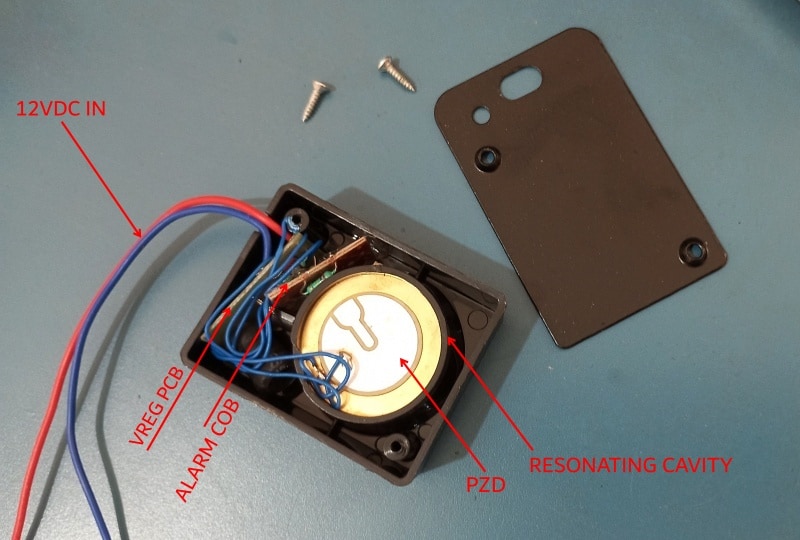
Note that the piezoelectric element (piezo disc) alone cannot generate a high sound pressure level because the acoustical impedance of the element does not match that of any open air loading. Therefore a resonating cavity must be built to match the acoustical impedance of the element and the encased air. By designing the diaphragm and the cavity to have the same resonant frequency, the sound pressure level (SPL) is maximized and specific bandwidths can be provided.
Once I dismantled the police siren, its design impressed me hardware-wise, it remains to be seen how it works which is arguably more important. So, without further ado I prepared an unsanded schematic which is shown below (accuracy not guaranteed).
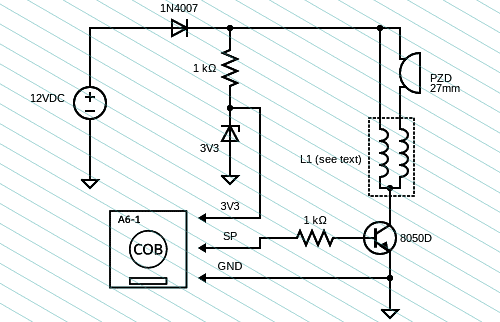
As can be seen in the schematic above, only a few simple components were used to build the entire system. A zener diode-based shunt regulator supplies a 3.3V regulated DC voltage to the alarm COB, while a medium-power NPN transistor is used to drive the piezo disc. As is common in most Chinese alarms and sirens, a 3-pin “alarm booster coil” L1 is included in the piezo disc driver circuitry.
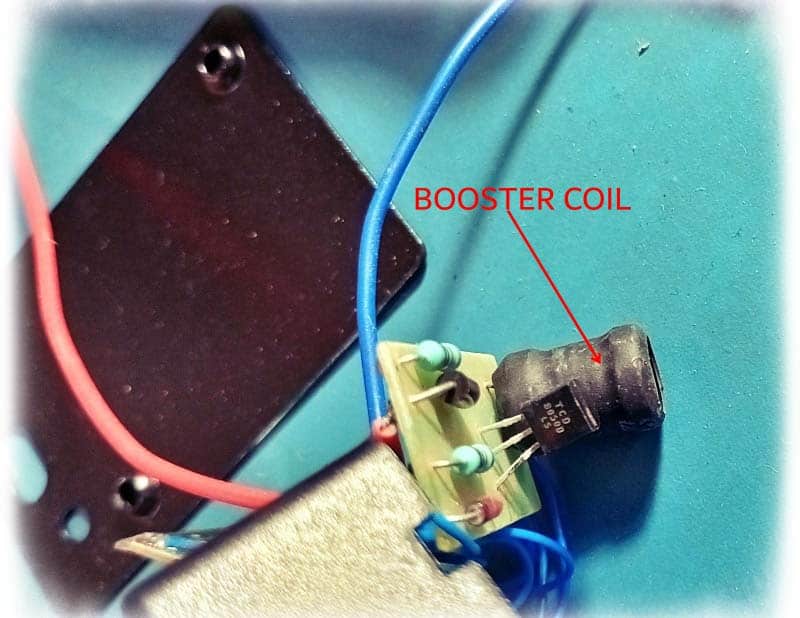
Notice that it is possible to raise the SPL of a buzzer by using a booster coil. The higher SPL is a result of the resonance between the inductor (booster coil) and the element (piezo disc), which is capacitive.
The booster coil (see below) works like an autotransformer i.e. a transformer without galvanic isolation, the primary winding is also a part of the secondary winding. Here, the low resistance coil is wired between the positive rail and the collector lead of the driver transistor whilst the piezo disc gets connected between the positive rail and the high resistance coil (Piezo Ceramic Discs – Some Practical Thoughts)
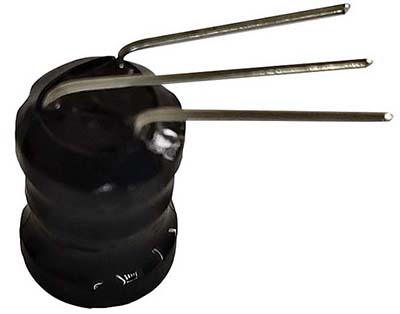
Just for a further bit of info, a closer inspection later revealed that the COB had a clear marking of A6-1, but that did not help me much. Actually the COB has a total of eight solder pads, only three of which are in use here (SP/-/B+). Also, there is a 220KΩ external resistor soldered on that PCB, probably for setting the tone tempo (see below).
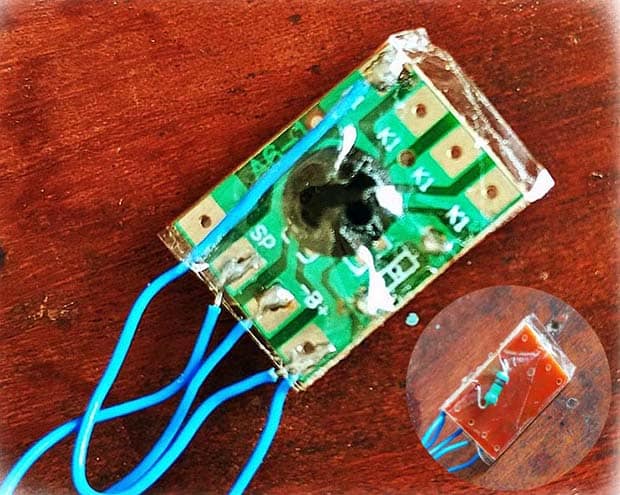
I will have to spend more time on this siren COB, but considering the time and effort involved, it is not very worthwhile, I think.
As a side note, this cheapo police siren worked well in my panoptic test setup. It took about 80mA from a 12V DC lab power supply. I warned you that the dual-tone output has the power to deafen anyone near it.
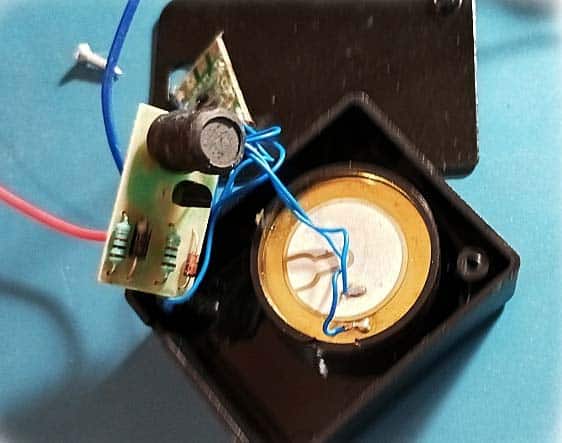
In conclusion, this compact electronic police siren can certainly provide an ear-splitting alert. So, it will help you build a budget security alarm system from your existing door sensors, motion sensors and other security sensors that you already have in hand. If you opt to get one, try to install it in a prominent location. Since it acts like a security siren, anyone with bad intentions might run away after hearing its screams!

